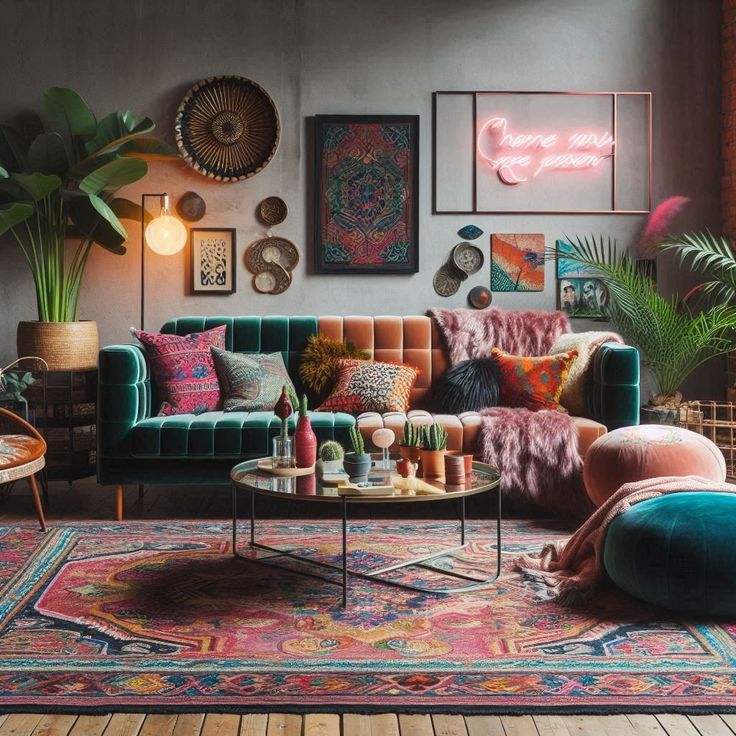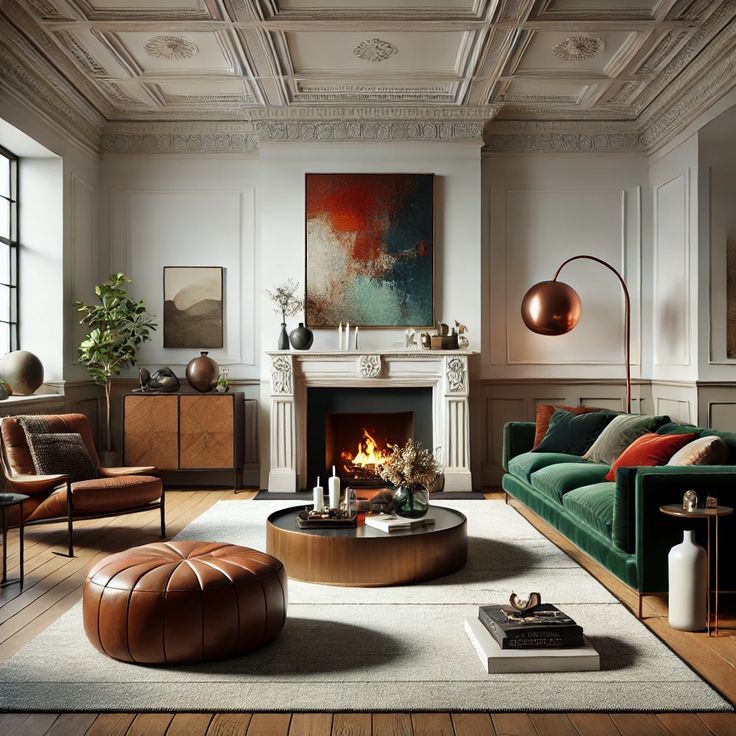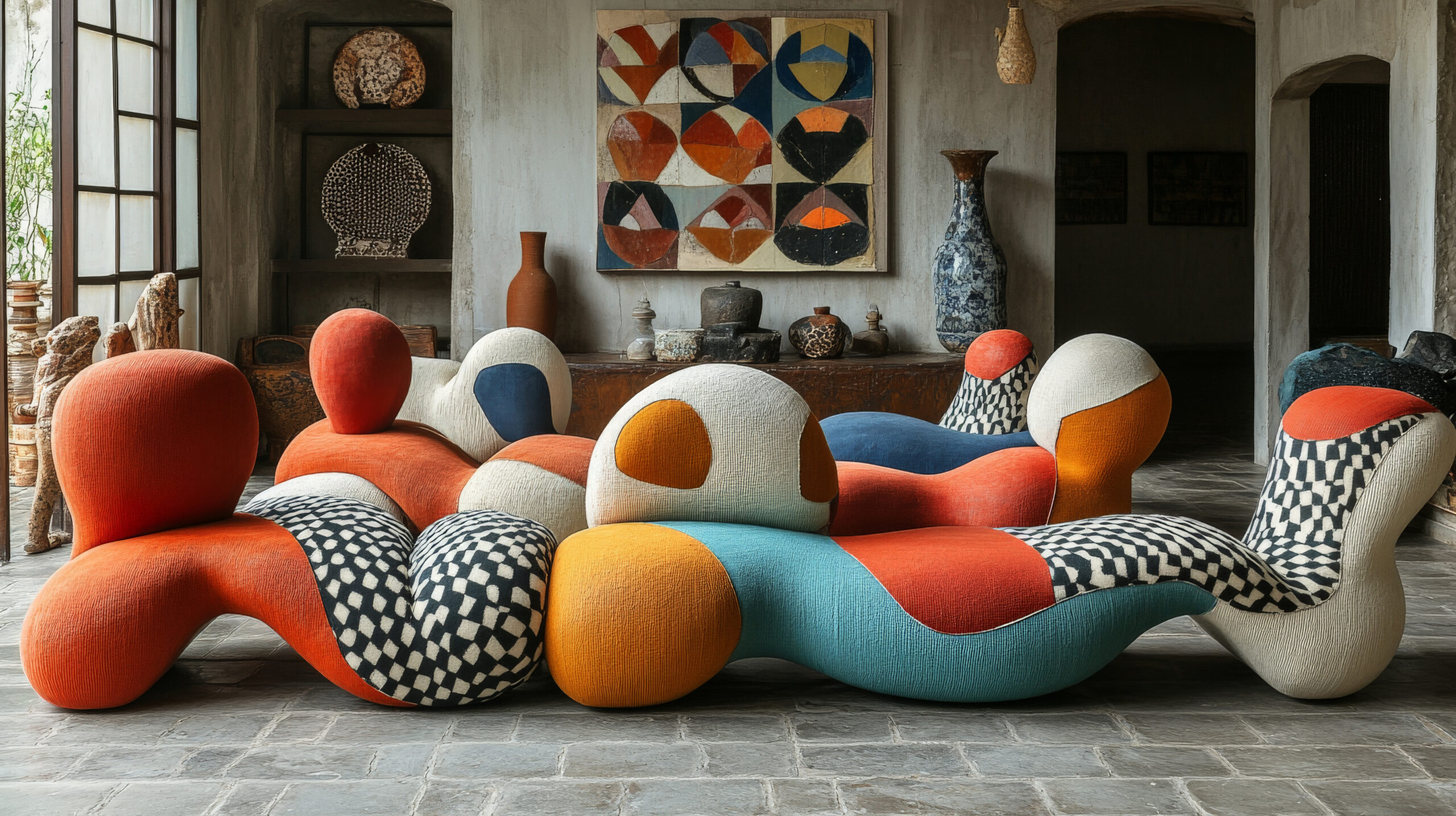Have you ever walked into a room and felt like it was a mix of different styles, colors, and textures—yet somehow, it looked effortlessly stylish and well put together? That’s the magic of eclectic interior design, a style that defies rules and embraces creativity to create spaces that feel personal, dynamic, and full of character.
But why do so many people avoid it? Is it the fear of creating a cluttered look? Or the uncertainty of mixing styles without making the space feel chaotic? The truth is, eclectic design isn’t about throwing random pieces together—it’s about intentional contrast and curated balance.
In this article, we’ll explore the origins of eclectic design, how it became popular, its most common color schemes in Europe, and how to incorporate this unique style into your home without making it look overwhelming. Plus, we’ll guide you on how to blend eclectic design into sofas, chairs, and tables in a way that feels stylish and cohesive.
What Is Eclectic Design and Where Did It Begin?
Eclectic interior design is a harmonious blend of various styles, eras, and materials, allowing for a space that feels unique and expressive. It does not adhere to one particular period but instead curates a mix of elements that reflect personality and taste.
This style emerged in 19th-century Europe, particularly in Britain and France, when designers started breaking away from rigid, traditional styles. Instead of sticking to one aesthetic, they began blending historical and modern pieces, creating spaces that were both stylish and personal. Today, eclectic design is particularly popular in Italy and Spain, where homeowners love to mix old-world charm with contemporary sophistication.

Why Do People Avoid Eclectic Design?
Even though it allows for creative freedom and individuality, many people hesitate to try eclectic interiors for several reasons:
- It looks messy or uncoordinated – Some assume eclectic design is just visual chaos with no clear direction.
- Fear of overdoing it – It’s easy to get carried away with too many colors, patterns, and textures, making the space feel overwhelming.
- Not knowing how to balance different elements – Many people struggle with finding a unifying factor that makes eclectic rooms feel intentional rather than chaotic.
However, when done correctly, eclectic design is incredibly sophisticated. The key is to create a connection between different pieces—whether through color, texture, or structure—so everything feels cohesive.
Most Popular Eclectic Color Palettes in Europe
In Europe, eclectic interiors often feature bold color combinations balanced with neutral backdrops. The most common palettes include:
- Deep navy blue and mustard yellow – A refined yet bold contrast seen in French eclectic homes.
- Olive green and muted blush pink – A combination trending in Italian interiors, adding an elegant yet playful touch.
- Soft white with black and gold accents – A British-inspired eclectic mix that blends modern and classic elements.
- Rich burgundy with warm browns – A warm and inviting palette seen in Spanish eclectic homes, often combined with vintage wooden furniture.
How to Choose Colors for an Eclectic Interior?
The secret to a well-executed eclectic style isn’t just about using multiple colors, but rather creating a balanced palette. Here’s how to do it:
- Start with a neutral base (white, beige, or light gray) to keep the space grounded, then add bold accent colors through furniture and decor.
- Balance strong colors with muted tones—if you have a bold blue sofa, complement it with a wooden coffee table and soft cream-colored walls.
- Mix warm and cool tones to create contrast without overwhelming the space.

How to Incorporate Eclectic Style into Your Furniture Choices
Eclectic design isn’t just about color and decor—it also extends to furniture selection and placement. Here’s how to create a harmonious blend of different styles without making your space feel cluttered.
1. Sofas – Mixing Fabrics and Textures
When choosing a sofa for an eclectic interior, think beyond the ordinary and mix textures, patterns, and materials.
- A velvet sofa in a bold color paired with linen or cotton throw pillows.
- A classic leather couch combined with a rustic wooden coffee table.
- A neutral-toned sofa styled with patterned and textured cushions for an unexpected twist.
2. Chairs – Variety in Shapes and Materials
Your chairs don’t all have to match! Eclectic interiors often use contrasting chair styles that work together through color or material.
- A modern metal-framed chair paired with a plush, vintage armchair.
- Rustic wooden dining chairs mixed with acrylic contemporary chairs for a bold statement.
- A mix of leather, fabric, and metal chairs for an effortlessly curated look.
3. Tables – Playing with Material Contrasts
Tables act as a visual anchor in eclectic design, tying together different elements in the room. Consider:
- A traditional wooden coffee table placed in a space with contemporary furniture.
- An industrial-style metal table matched with bohemian woven chairs.
- A sleek glass dining table surrounded by bold-colored chairs.

How Zory.ai Makes Eclectic Design Easy to Achieve
If you love the eclectic aesthetic but don’t know where to start, Zory ai makes it easy by offering:
- A curated selection of eclectic-style furniture to help you visualize how different pieces can work together.
- Smart recommendations based on your personal taste so you can mix and match styles effortlessly.
- AI-powered previews to see how eclectic furniture fits into your home before purchasing.
Conclusion
Eclectic design is not random chaos—it’s an intentional fusion of different styles that, when done right, creates a one-of-a-kind, personality-filled space. By carefully selecting colors, textures, and furniture combinations, you can achieve a perfectly curated eclectic interior that feels both exciting and cohesive.With Zory, embracing eclectic design has never been easier. Explore our collection, get AI-powered design recommendations, and create a space that is uniquely yours
